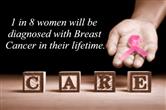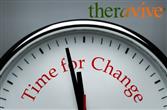October 12, 2013
by Ashley Marie

Breast cancer can touch anyone. Here is a story of love and courage in the face of this struggle.
[More]
October 8, 2013
by Casey Truffo, LMFT

No matter how legitimate the grievance, harboring resentment does neither you nor the relationship any good. So what do you do when that old hurt keeps rearing its ugly head?
[More]
October 1, 2013
by Casey Truffo, LMFT

Anger is a normal and even healthy emotion, but it's imperative to deal with anger in a positive way or it can wreak havoc on yourself and your relationships. Here are 8 vital tips on how to control your anger before it controls you.
[More]
September 25, 2013
by Christie Hunter

As baby boomers progress to the retirement stage, many are finding that they are becoming what has been termed “adult orphans.” The adjustment from being a four-generation family, to a three-generation family can be a dramatic change to one’s life.
[More]
September 24, 2013
by Casey Truffo, LMFT

Believe it or not, one common source of relationship problems is a pet. In fact, many couples find themselves arguing over their pets for numerous reasons. While these arguments may seem minor and not necessary to sit down and address, the reality is that they can, overtime, cause more major disagreements or problems.
[More]
September 15, 2013
by Casey Truffo, LMFT

Are you a perfectionist? It's one thing to get it right, but focus too much and things can wind up wrong. Here are some effects of perfectionism you may not realize.
[More]
September 14, 2013
by Casey Truffo, LMFT

Great chemistry, communication, and trust are at the top of the list when it comes to having a succe
[More]
September 10, 2013
by Ashley Marie

September 10 is World Suicide Prevention Day.
On this day, governments lead new initiatives to help prevent suicide, conferences and lectures are provided to raise awareness about suicide, and candlelight ceremonies are held in remembrance of those who died from suicide.
Suicide and suicidal thoughts affect individuals all across the globe. According to the World Health Organization (WHO), about 1 million people commit suicide every year.[1] On average, this means that someone dies from suicide every 40 seconds and someone attempts to commit suicide every 3 seconds.
These statistics are tragically high. The WHO estimates that more people die from suicide than from armed conflicts. For teenagers and young adults, suicide is one of the primary causes of death. Suicide also tends to be more common among men than women.
Country with the Highest Suicide Rate
The country with the highest rate of suicide in the world is Greenland.[2] Even Japan, a country that has a history of high suicide rates, has 51 suicides per 100,000 residents. In Greenland, 100 die from suicide per 100,000 inhabitants.
This mental health issue is so widespread that just about everyone in Greenland knows someone who has committed suicide. And this is a historically recent phenomenon. In the early 1900s, this country’s suicide rate was merely 0.3 people per 100,000 residents. This rate dramatically increased in the latter part of the 20th century, especially in the 1970s and 1980s.
Researchers argue that residents of Greenland employ suicide methods that allow for a low chance of survival. 9 in 10 men commit suicide through shootings or hangings, and this method of killing also applies to 7 in 10 women.
It is difficult to determine why suicide is so prevalent in Greenland. Some theorists suggest that it can create a vicious cycle; once one person commits suicide, others may become more inclined to do the same. Some point to Greenland’s issues with poverty. Others highlight that 88% of the country’s population is Inuit, and much like North America, many of them suffer from alcoholism. Though Greenland has very harsh winters (which could contribute to depression), studies show that the highest rates of suicide occur in the summer.
Suicide in North America
Though suicide is not as prevalent as it is in Greenland, the United States and Canada continue to suffer from suicides.
In 2009 in the United States, there were 36,909 deaths from suicide – and this number is higher for men than women, as well as for people of color than Caucasians.[3] (For more information about the relationship between minority groups and mental health issues, read What Can You Do to Raise Awareness?). Between 2008 and 2009, suicide was the only leading cause of death in the United States that showed a significant increase. Suicide is the 10th leading cause of death for Americans, and there are 12 suicides per 100,000 residents.
Similar to the United States, in 2009 Canada’s suicide rate was 11.5 suicides per 100,000 residents. In Canada, the highest rates of suicide occur among those between the ages of 40 and 59, and suicide is again more common among men than women.
Suicide Rates: Men Versus Women
Again and again, studies have found that suicide rates tend to be higher among men than women.
This is a difficult pattern to explain, but Payne et al. suggest that our socially constructed notions of masculinity and femininity may have an effect on suicidal behaviors. Because male gender roles focus more on strength and risk-taking behaviors, men may be more likely than females to commit suicide.[4] Men might also feel more pressure to be ambitious and successful, which can lead to depression in times of economic turmoil and higher rates of unemployment. This is especially difficult when men feel the need to provide for their family.
Therapy to Help Prevent Suicide
Suicide is a serious mental health issue, but there are ways to help prevent it. Active Minds is an organization that aims to raise awareness and provide support for suicide prevention. They stress the importance of seeking help if you or someone you know suffers from suicidal thoughts or behaviors. They have a 24-hour suicide prevention lifeline (1-800-273-TALK or 1-800-273-8255) if you or someone you know needs to talk to someone. Long-term therapy is also highly recommended for those suffering from suicidal tendencies.
According to WHO, friends and family members of those contemplating suicide should also look for warning signs. If you discover that someone you know is threatening to harm him or herself, do not hesitate to seek help.
[1] Suicide. 2013. World Health Organization. [online] Available at: <http://www.who.int/topics/suicide/en/> [Accessed 2 September 2013].
[2] George, J. 9 October 2009. The Suicide Capital of the World. Slate. [online[ Available at: <http://www.slate.com/articles/news_and_politics/dispatches/2009/10/the_suicide_capital_of_the_world.single.html#pagebreak_anchor_2> [Accessed 2 September 2013].
[3] Kochanek, K.D. et al. 29 November 2011. National Vital Statistics Report, v 50 no 3. [online] Available at: <http://www.cdc.gov/nchs/data/nvsr/nvsr60/nvsr60_03.pdf> [Accessed 2 September 2013].
[4] Payne et al. 2008. The social construction of gender and its influence on suicide: a review of the literature. Journal of Men's Health. [online] Available at: <http://www.sciencedirect.com/science/article/pii/S1875686708000146> [Accessed 2 September 2013].
September 9, 2013
by Cindy Marie Hosszu

Are You in the Zone?
For some people, a change of plans, scenery, or life-style is exciting, and welcome. However, for many of us, change comes with some resistance or fear. Stepping out of our comfort zone requires delving into the unknown, risking failure, and being embarrassed.
Change Can Be Bad for Your Health
In the late 60’s, psychiatrists Thomas Holmes and Richard Rahe examined the link between stressful events and illness. By examining the medical records of 5000 patients, and asking if they had experienced 43 of the most common life stress events, they found a link between the number and weight of stressful events and illness. The Holmes and Rahe Social Readjustment Rating Scales, or more commonly the Holmes and Rahe Stress Scale, lists 43 of the most common life change events that may cause illness, with a weight for stress listed in Life Change Units (LCU).
The theory was tested throughout the 70’s and has become widely accepted. Of the 43 life events, the death of a spouse was the most stressful at 100 LCU’s, followed by divorce, marital separation, jail term, death of a close family member, personal injury or illness, marriage, fired from a job, marital reconciliation, retirement, change in health of family, pregnancy, sex difficulties, gain new family member, business readjustment, change in financial state, death of a close friend, trouble with in-laws, spouse begins or stops work, beginning or end of school, change in living conditions, revision of personal habits, trouble with boss, change in work hours, change in residence, change in schools, change in recreation, change in church activities, change in social activities, change in sleeping habits, change in eating habits, vacation, Christmas, and minor violations of the law.
The shortfall of the rating scale is that it does not include major stresses that can occur such as violence or abuse in the home. It also does not account for everyday stress such as traffic, interactions with strangers, etc. Another thing to consider is that different life events have differing effects on individuals. One person’s stress may be another person’s fun. It does, however, give an idea of the amount of stress that certain life events can have on an individual in a year, to determine if stress could cause future illness. Additional studies confirm that when stress is measured holistically, the damage it can cause to health is significant. [i]
How We Deal with Change
Changes in our lives cause a loss of routine, or normalcy. For some people, in some situations, this loss requires a grieving process. The most commonly acknowledged Kubler-Ross Model of Grief states that there are five observed stages we normally go through when we face significant changes to our life. These categories will vary in time, and consistency. We may experience them in different order, and go back and forth from one to the next, or skip one completely.
Denial is the first stage in the model. Upon significant change, we lack information, and have fear of the unknown or failure. We think things such as, “this can’t be happening to me.” At this stage, we may act as though nothing is wrong or our actions may show life as usual.
Anger is the next stage. In this stage, we blame things or people outside ourselves, or ask “why is this happening to me?”
The bargaining stage is when we get actively involved in the situation. We look for a way out of the situation, or for solutions to the situation. We look for a way to take things back to normal.
Depression sets in when we realize that we cannot change the situation.
Acceptance finally occurs when we have come to terms with the situation, and can be hopeful that we can change, or can move forward and face the outcome. The new change becomes exciting.
Although these were observations by Kubler-Ross of patients that were dying, and what they went through in that process, many have used this model as a tool to understand the process of grieving. Each person will go through changes and grief differently based on their own circumstances. The point to the observations is that we tend to deal with significant changes in many of the same ways as others, and that the way we respond is often normal.
Getting help
Research has found that the best healing success comes in the form of emotional coping strategies gained through a therapist, and that avoidance is the worst thing for healing.[ii] In order to reduce the risk of illness and make the transitions in our lives go more smoothly, counseling can be integrated into the healing process. A therapist can help identify what risk may be associated with the stress of change, how much and how long we have been under stress, and if we are at risk of health problems.
For more about traumatic stress, read this.
[i] Stress and Health: Major Findings and Policy Implications Peggy A. Thoits Journal of Health and Social Behavior
Vol. 51, Extra Issue: What Do We Know? Key Findings from 50 Years of Medical Sociology (2010), pp. S41-S53
Published by: American Sociological Association Stable URL: http://www.jstor.org/stable/20798315
[ii] Worden, J. W. (2009). Grief counseling and grief therapy: A handbook for the mental health practitioner (p. 66). New York, NY: Springer Pub. Co.
September 5, 2013
by Ashley Marie

It’s 11pm. Now 12am. Now 1am. Now 2am. Now 3am.
And you still haven’t fallen asleep.
During those sleepless hours, you might feel like the whole world is asleep – except you. But you are not alone.
In 2010, it was reported that the demand for sleeping pill prescriptions boosted by 60% in the United States.[1] Moreover, one in three Americans has difficulties falling asleep, and more than 35 million have chronic insomnia.
A Brief History of Insomnia
There is an intriguing relationship between insomnia and historical developments. As outlined by Summers-Bremner, certain events of the human story have contributed to our propensity to become insomniacs.[2] In the 1700s, the European Baroque culture led to a greater appreciation of modern nightlife, thereby interrupting regular sleep patterns. Historians especially point to industrialization as a dominant variable that led groups of society – even cities – to become victims of tiresome, sleepless nights. The developments of gas, electric lighting, the increasing popularity of nighttime entertainment, and evermore-busy schedules have turned our sleep into an utter nightmare. For these reasons, urban cities are especially connected with the rise of insomnia. It is not surprising, then, that the popular Hollywood film, Sleepless in Seattle, takes place in an urban setting.
My Experience with Insomnia
Like you, I too have suffered from insomnia. I am all too familiar with the cycle of fearing that I will not fall asleep, not falling asleep, and then dreading that I will wake without ever having slept.
I have laid down in bed and calculated how many coffees or teas I should have the next day,just to get through the first few hours of the morning. I have also planned out when I can squeeze in a quick 15-minute nap to give me the energy needed to last the rest of the day. And I have felt hopeless by thinking that my insomnia had no cure.
But following the advice of my counselor, I made a few small changes in my diet, exercise, schedule, and thought patterns. I eventually discovered that I could enjoy the blessing of a restful sleep.
Defining Insomnia
Doctors have defined three main types of insomnia.[3]
Transient Insomnia
The first of these is transient insomnia. This category of insomnia involves troubles sleeping for only a night or two. For example, you might not sleep as well on the night before an exam, or the night before an important meeting, or the night after a heated argument with your loved one.
Short-Term Insomnia
Secondly, short-term insomnia occurs when you cannot sleep well for a few days or even a few weeks. This could be because you are stressed about work, suffering from relationship issues, or getting over jet lag.
Chronic (or Acute) Insomnia
Thirdly, chronic insomnia involves troubled sleep patterns that last for months or years. Unfortunately, this category of insomnia can lead to or be caused by mental health issues, notably depression and anxiety.
Insomnia and Mental Health Issues
Depression
One of the key mental health issues associated with insomnia is depression.[4] Signs of depression include irritability, a short temper, decreased motivation, an inability to concentrate, hopelessness, increased crying, and a lack of fulfillment in things that you would typically enjoy.
Sometimes it is difficult to trace the causal relationship between insomnia and depression. Did your insomnia cause your depression or did your depression cause your insomnia? If you are unsure of the answer, it is a good idea to discuss this with a counselor. Addressing this question can help you identify the root of your insomnia, which can help you along the path to more restful nights.
Anxiety
In addition to depression, anxiety can also be intimately related to insomnia.[5] Signs of anxiety include an inability to relax, dizziness, nausea, excessive fears, nightmares, and hot or cold sweats.
Anxiety can also lead to a perpetual cycle of feeling anxious about not sleeping and then not sleeping due to your anxiety.
If you struggle with anxiety and insomnia, then cognitive behavioral therapy is a helpful method of treatment. By seeking the help of a mental health professional, you can help identify the root of your anxiety, as well as effective coping techniques.
Seeking Help from a Mental Health Professional
Insomnia can be a lonely experience, but there are mental health professionals who can walk alongside you in your search for a restful sleep.
You know that simply counting sheep does not solve the issue. You also might feel that your insomnia is related to a deeper issue – the most common being either depression or anxiety. If you can’t sleep, then rest assured that there are counselors and therapists who can help you discover techniques, medications, and lifestyle changes that can help you restore your sleep. I’ll let you sleep on that.
[1] Kornblatt, S. 2010. Restful Insomnia. San Francisco: Red Wheel.
[2] Summers-Bremner, E. 2008. Insomnia: A Cultural History. London: Reaktion Books.
[3] Kornblatt, S. 2010. Restful Insomnia. San Francisco: Red Wheel.
[4] Silberman, S.A. 2008. The Insomnia Workbook. Oakland, CA: New Harbinger Publications.
[5] Ibid.